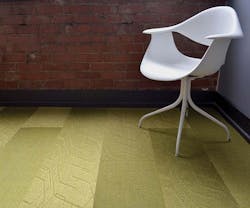Joey Shimoda envisions the future as a place where “architecture will be invisible ... where we can be anywhere we want at any time.” If it sounds like a page out of a sci-fi script, it is; Shimoda references Star Trek’s virtual-reality “holodeck” in describing how the built environment will take on hyper-realistic characteristics in the near future.
“I think designers will be relying much more on realistic visioning processes to create and deliver design,” Shimoda noted. “What I mean specifically is the virtual reality goggles that allow people to be in a space with hyper realism. I am not sure it is a good thing for designers, but if it raises the quality of the built environment then that is a good thing.”
For now, the celebrated L.A.-based architect—and founder/chief creative officer of Shimoda Design Group—has a lot of irons in the fire, with core and shell, master planning, as well as interiors and product design projects on the boards.
Among them is his recent collaboration with Mannington Commercial on the Traction Avenue carpet collection, which debuted at NeoCon.
Inspired by the streets of Los Angeles and his love of automobiles, Shimoda said, “The patterns are reminiscent of treads on a tire, creating a certain flow, and it also has an underlying comment about streets, and living in an urban condition.
“The other aspect we explored is color—we are probably a little out of sync with the trend of super chromatic bright colors but we liked the idea of pushing colors into a richer range,” he explained. “We graduated the planks to get an almost iridescent effect. In some carpets it almost glimmers.”
Although designing carpet may not push the limits of reality (yet), technology played an integral role in the success of Traction Avenue.
“In our case the utilization of new cutting plank technology as well as the integration of state of the art carpet looms allowed us to get to real solutions fairly quickly,” he said. “But the ideas and effect of the design required more time and experimentation, so in a way, the technology allowed us to create more options which allowed us to understand and sharpen the design possibilities.”
About the Author
Robert Nieminen
Chief Content Director
Chief Content Director, Architectural Products, BUILDINGS, and interiors+sources
Robert Nieminen is the Chief Content Director of three leading B2B publications serving the commercial architecture and design industries: Architectural Products, BUILDINGS, and interiors+sources. With a career rooted in editorial excellence and a passion for storytelling, Robert oversees a diverse content portfolio that spans award-winning feature articles, strategic podcast programming, and digital media initiatives aimed at empowering design professionals, facility managers, and commercial building stakeholders.
He is the host of the I Hear Design podcast and curates the Smart Buildings Technology Report, bringing thought leadership to the forefront of innovation in built environments. Robert leads editorial and creative direction for multiple industry award programs—including the Elev8 Design Awards and Product Innovation Awards—and is a recognized voice in sustainability, smart technology integration, and forward-thinking design.
Known for his sharp editorial vision and data-informed strategies, Robert focuses on audience growth, engagement, and content monetization, leveraging AI tools and SEO-driven insights to future-proof B2B publishing.

